When you’re a part of a team that collaborates well, it’s easy to see what a difference it can make. When everyone works together to accomplish a task, the whole is greater than the sum of its parts. The sense of camaraderie and achievement that strong collaboration fosters can push a team to go further than an individual could on their own.
Collaborate on Tasks with Jotform Boards
An overview of team collaboration
Countless studies have shown that healthy teams are more productive and efficient. One reason for this is that individuals with different perspectives and ideas can infuse new life into a project when they work together as a team. Another reason is that team members often feel motivated to do their best work when they understand they may let their teammates down if they don’t meet their responsibilities.
Effective teamwork requires people to come together and share their diverse skill sets and thought processes in pursuit of the same goal. To do this effectively, you need communication, respect, and flexibility. It’s also helpful to identify each team member’s strengths and weaknesses and assign roles accordingly. A smooth-functioning team leverages everyone’s strengths and compensates for weaknesses.
Ultimately, it’s important to seek feedback from each team member to evaluate what is and what isn’t working. This makes it easier for everyone to build on successes and make adjustments where team collaboration may be breaking down. It also lets your team know that you’re listening to their opinions and valuing their input.
Create a team collaboration survey preloaded with these 20 questions.
The benefits of team collaboration
It’s hard to overstate the importance of effective team collaboration. The degree of alignment among team members has a big impact on whether they succeed in their tasks or projects.
Effective team collaboration is a win-win for both employees and management. When team collaboration is strong, team members feel they’re helping each other and receiving meaningful support. As a result, they’re more inclined to believe they’re making a positive contribution, and that increases job satisfaction.
For managers and business owners, successful team collaboration means greater efficiency, productivity, and morale. This often leads to better and more efficient results than a weaker team could deliver.
Different types of team collaboration
Collaborating with a team can take many different shapes. Some collaborative teams may be working together in person, or your team members could be spread out across the world and operating in different time zones.
These differences in physical setup pose their own unique challenges and require different strategies. However, most teams can overcome these challenges by employing two types of collaboration.
Communication-based collaboration
Communication-based collaboration is necessary for brainstorming, sharing opinions, fine-tuning creative ideas, and keeping everyone aligned on the various tasks and projects the team is working on.
One of the main goals of communication-based collaboration is to ensure that everyone feels included and informed. Successful communication-based collaboration fosters transparency and smooth workflows through regular meetings to update the team. It keeps information flowing between individuals or groups within a team.
Task-based collaboration
Task-based collaboration refers to the organizational teamwork required when different individuals need to share their expertise to accomplish a single task. For example, in order to accomplish the task of delivering a plate of pasta to a customer in a restaurant, the host needs to seat the customer, the server needs to take the order and communicate it to the kitchen, the prep chef has to chop the onions, the line chef needs to cook the food, and finally, the server needs to deliver the food.
Each individual has a specific set of skills and responsibilities that team leaders need to tap into in order to accomplish the task. In task-based collaboration, strong internal communication among team members is essential.
In most cases, both task-based and communication-based collaboration are necessary for teams to work together well. Understanding the difference between the two can help you manage how your team operates.
20 best questions to ask in a team collaboration survey
No matter how you approach team collaboration, it’s important to get feedback from employees to ensure the team is successful. Surveys are an efficient and effective way to gather that feedback. Here are 20 team collaboration survey questions to get you started:
- On a scale of 1–10, how well do your team members support you?
- On a scale of 1–10, how would you rate the quality of communication within your team?
- On a scale of 1–10, with 10 being very effective and 1 being not effective at all, how effectively do you resolve conflicts within your team?
- On a scale of 1–10, with 1 indicating you have no trust and 10 indicating you have complete trust, how much do you trust your team members?
- In terms of your contributions to the team, what are your strengths?
- In terms of your contributions to the team, what are your weaknesses?
- In what ways could your teammates better support you?
- How clearly does team leadership communicate team goals and objectives?
- Do you feel leadership and your fellow team members value your contributions to the team?
- Do you receive adequate feedback on your contributions from team members?
- Do you feel comfortable sharing your ideas and opinions with the team?
- Are roles and responsibilities within the team clearly defined?
- Do you feel that responsibility among team members is evenly divided?
- Are the tools and resources provided sufficient for effective collaboration?
- How often do team members collaborate outside of scheduled meetings?
- Can you provide an example of a recent team project that was successful? What made it successful?
- What improvements, if any, could we make to enhance team collaboration?
- How does your team celebrate successes and achievements?
- How well do you think your team handles setbacks and challenges?
- Do you have any suggestions on how we could improve team collaboration in the future?
Factors to consider when creating a team collaboration survey
The goal of this type of employee survey is to gain insight into the strengths and weaknesses of the team as a whole. Sending out a feedback survey is a great way to develop a deeper understanding of how to improve team effectiveness. Here are some factors to consider when creating your survey:
Answer format
Each question type has its own strengths and weaknesses. Open-ended questions will give you more specific feedback, but that feedback may be harder to quantify and visualize. Answers to closed-ended questions lack nuance and specificity, but they’re better at giving high-level analysis and easier to visualize.
Within the category of closed-ended questions, there are different types of answer formats you can include in your survey, including true or false, multiple choice, agree or disagree, and rating scales. Online survey solutions like Jotform allow you to choose from a variety of answer formats, depending on which kind of data you hope to gather.
Anonymity
Consider whether you want the responses to your team collaboration survey to be anonymous. Anonymous surveys are likely to result in more honest answers. However, if the survey is anonymous, it will be difficult to ask personalized questions, such as those about the team members’ strengths and weaknesses.
To get around this issue, you may want to field two different surveys: one that’s anonymous and one that isn’t.
Team dynamics
It’s also a good idea to remember that there may be unique dynamics that may impact your team. Think about what challenges your team has encountered in the past, and don’t be afraid to ask tough questions. The more you know about your team’s weaknesses, the better you can prepare for them in the future.
Jotform: A powerful tool for team collaboration surveys
Creating a team collaboration survey is easy with a solution like Jotform. Jotform is a no-code form builder that allows you to create surveys of any kind.
Jotform has more than 1,000 survey templates, including a teamwork survey. It’s easy to customize the templates, or you can create your own survey from scratch with Jotform’s intuitive drag-and-drop form builder. When you’re done, you can share your survey via email, link, or QR code.
Jotform also offers integrations with tons of other applications, like Zoom, Slack, and Salesforce, allowing you to seamlessly incorporate a team collaboration survey into your existing workflow.
Tools for understanding team collaboration survey results
Once your team members have filled out the survey, you may be wondering what to do with this invaluable data. Jotform Tables automatically collects your team members’ survey responses in a customizable spreadsheet-database.
Within this spreadsheet, you can sort data and glean actionable insights from your survey results. You can also set up formulas to calculate data or combine text, date, numeric, and logical functions. This no-code solution can help you quickly understand trends in your survey response data and share it with others, either by sending the information to other software through an integration, creating PDFs, or sending it via email.
Jotform’s Report Builder is another convenient option for visualizing data. When it’s time to present your findings, this powerful tool can automatically generate professional reports from the responses. Jotform will present your survey data using charts, graphs, or tables in one click. You can even share survey results with your team in real time, as Jotform adds new form data to your presentation automatically.
Jotform Enterprise was designed with team collaboration in mind. This platform keeps your organization’s data in one place, and you can create different workspaces for each team, fostering seamless collaboration. Team members can work together to create surveys, presentations, and more. This feature allows the entire team to have access to the most up-to-date information.
Strong team collaboration has wide-reaching impacts and is something leadership should dedicate time and attention to. Seeking feedback about how your team collaborates is essential to team-building, and it can help you improve levels of employee satisfaction, productivity, and efficiency.
Photo by fauxels











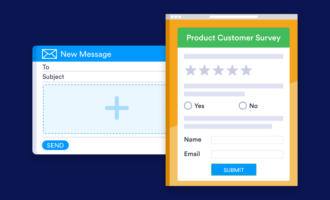























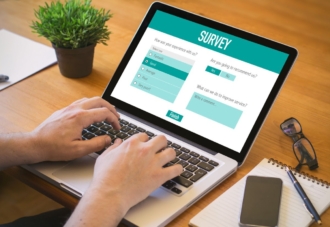


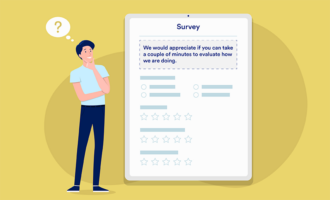
















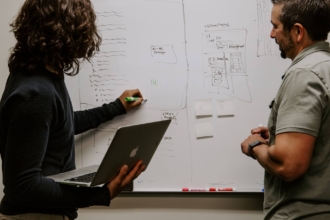









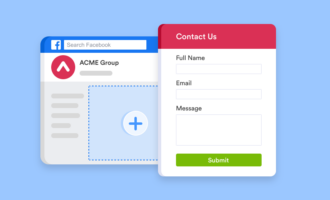

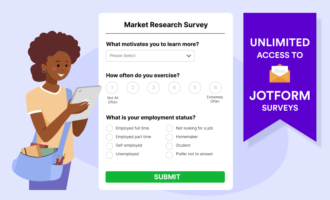














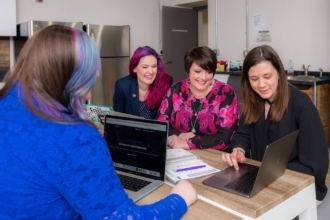








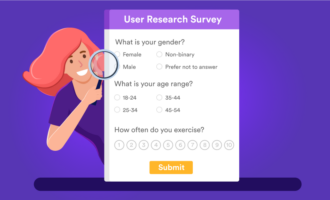











Send Comment: